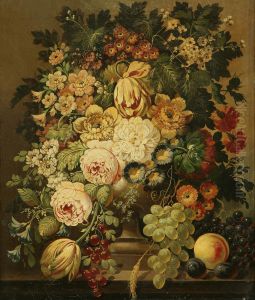Hove Paintings
Francis Hove, born in 1794, was a British artist whose contributions to the art world, though not widely recognized in the grand spectrum of art history, hold a unique position in the early 19th century British art scene. His life and work are a testament to the period's shifting aesthetics and the emergence of new artistic sensibilities amidst the backdrop of the Industrial Revolution and the Romantic era. Hove's work primarily revolved around landscape and portrait painting, reflecting the era's fascination with nature, emotion, and the individual.
Hove's early life was marked by the typical apprenticeship for artists of his time, studying under established painters and engravers to hone his craft. However, detailed records of his early mentors and specific training are sparse, a common issue when researching artists of lesser-known status from this period. Despite this, Hove managed to develop a distinctive style that merged the precision of the neoclassical tradition with the emotive expressiveness of Romanticism. This duality in his work captured the tension of an age caught between the rational enlightenment ideals and the burgeoning sense of individual expression and emotional depth that the Romantic movement heralded.
Throughout his career, Hove exhibited at various prestigious institutions, including the Royal Academy, albeit not as frequently or prominently as some of his contemporaries. His landscapes often depicted the English countryside, imbued with a sense of tranquility and a poignant appreciation for the natural world, which was increasingly under threat from industrial expansion. Meanwhile, his portraits, though less celebrated, offered insightful glimpses into the personalities of his subjects, emphasizing the Romantic ideal of the inherent value and complexity of the individual.
Despite a career that contributed to the artistic dialogues of his time, Hove's work did not achieve the same level of lasting fame or influence as some of his peers. He died in 1855, leaving behind a body of work that, while perhaps not groundbreaking, offers valuable insights into the transitional period of British art during the early 19th century. Today, Hove's paintings can be found in several regional museums and private collections, where they continue to be appreciated for their craftsmanship and emotional depth, serving as a reminder of the diverse and evolving landscape of British art during this pivotal era.
